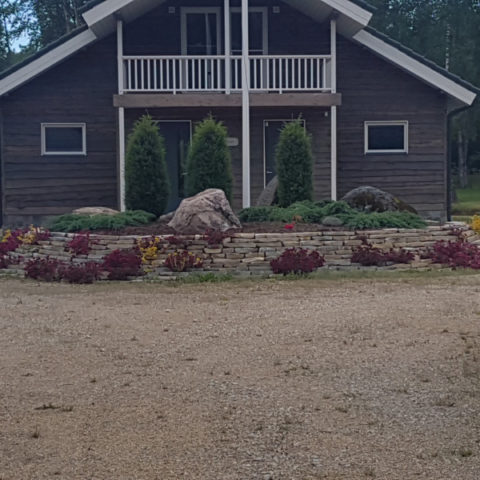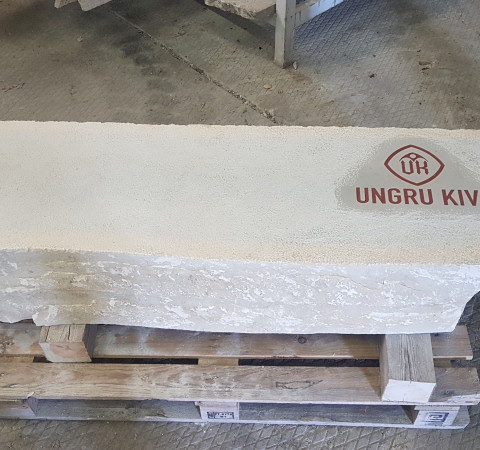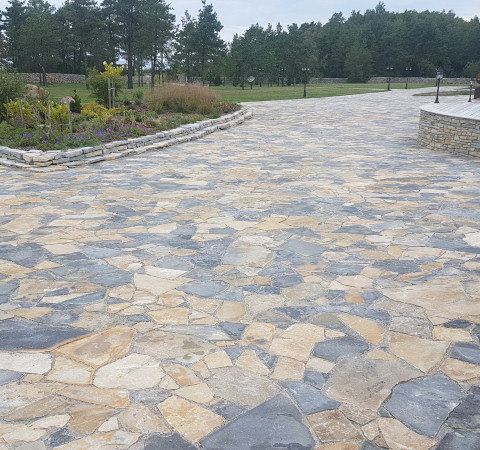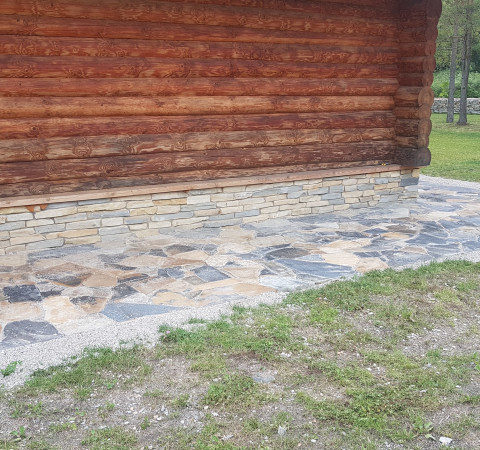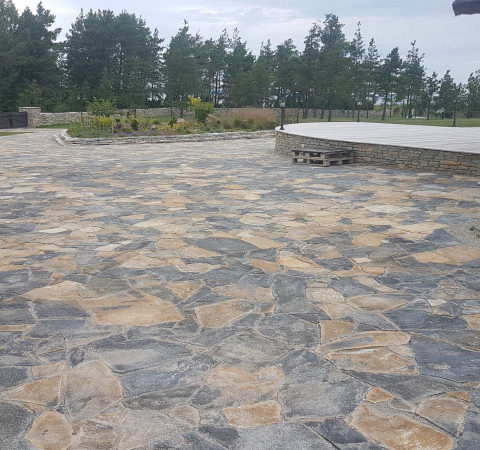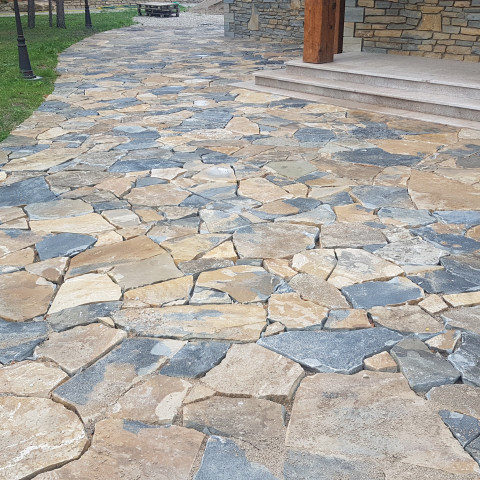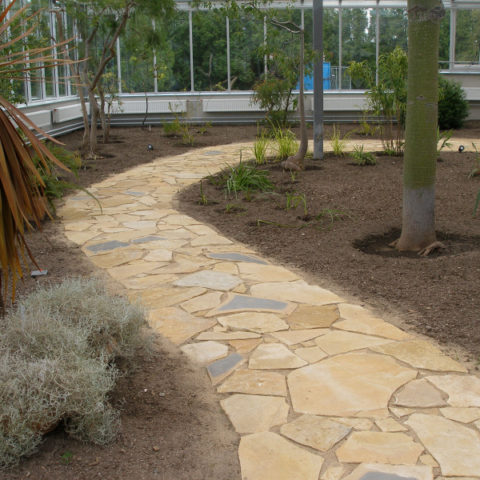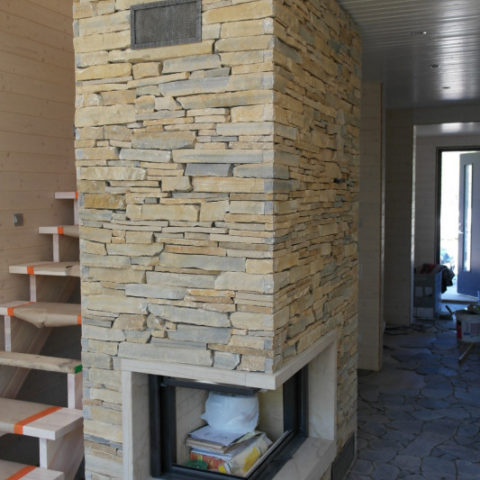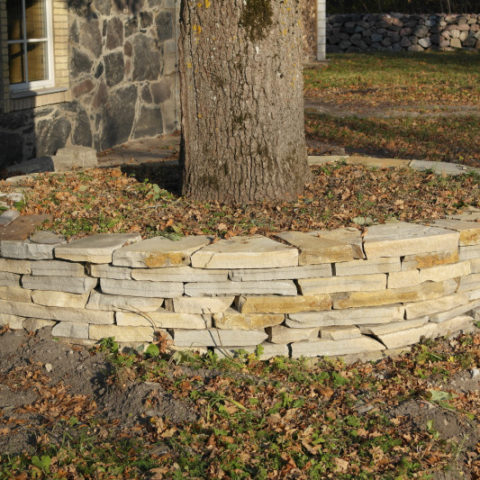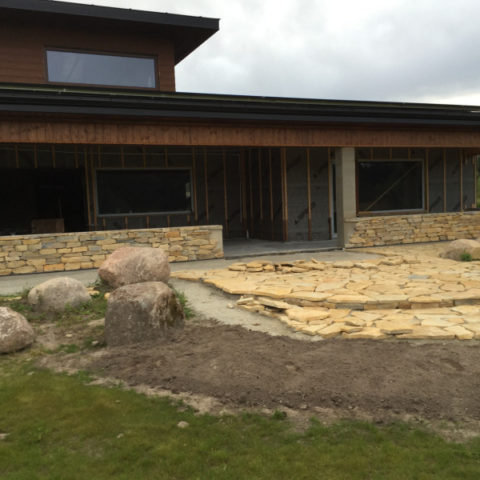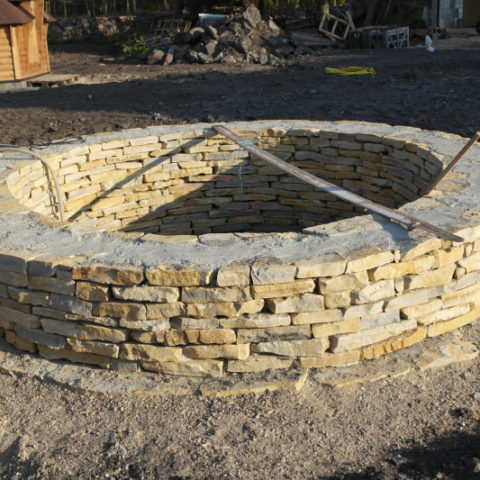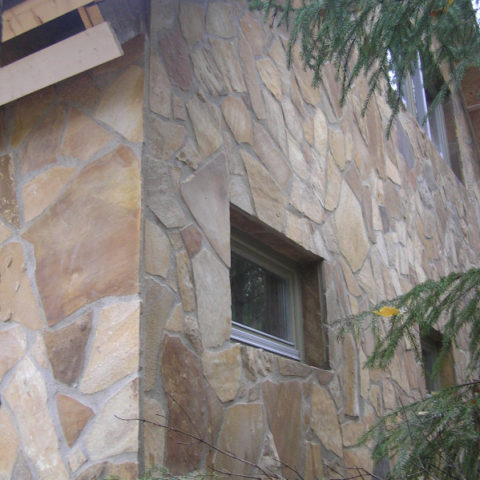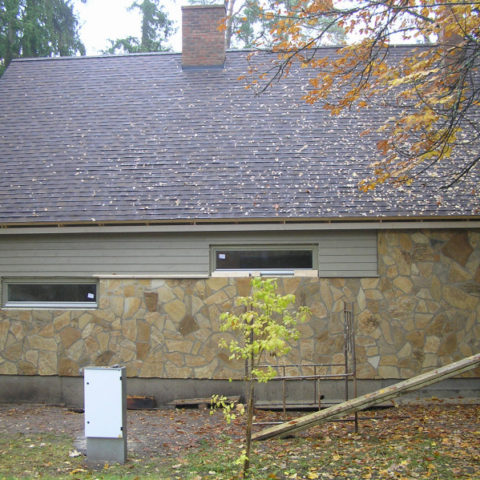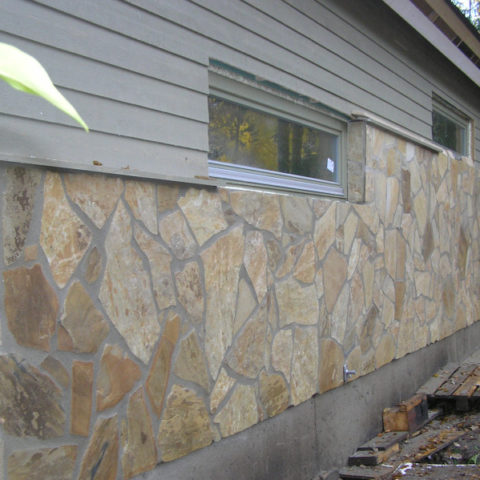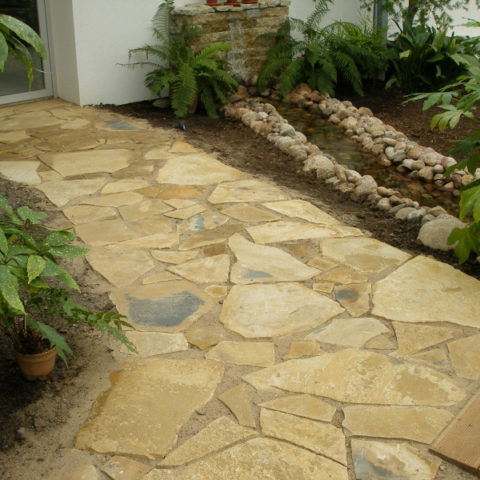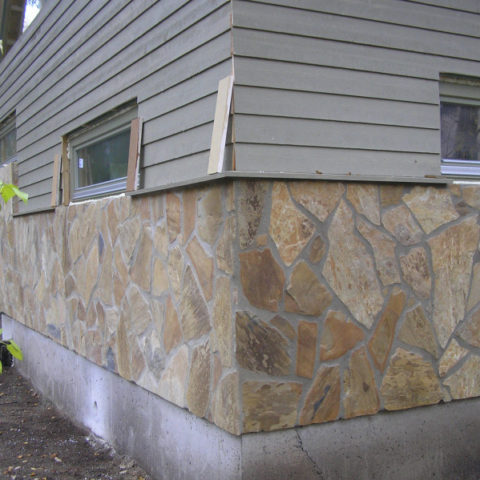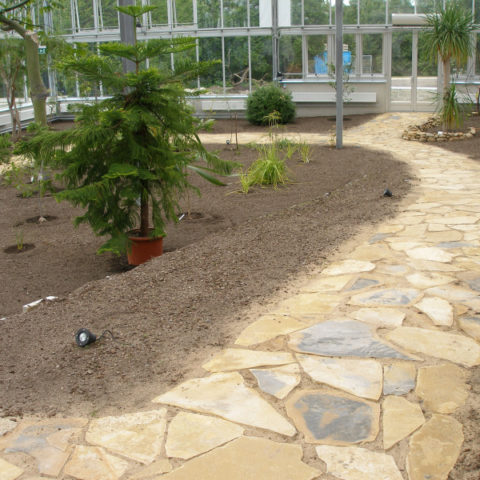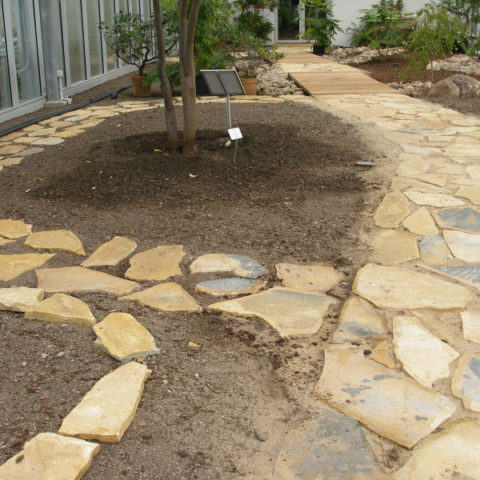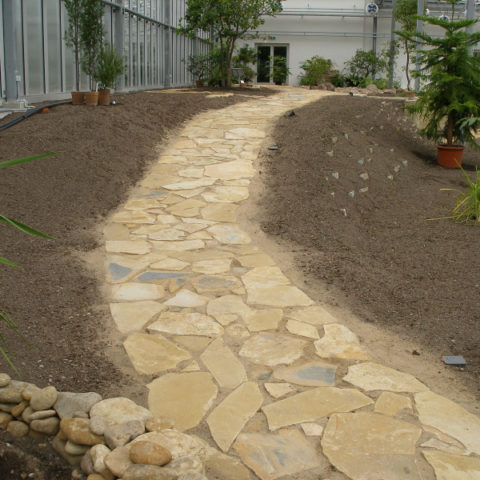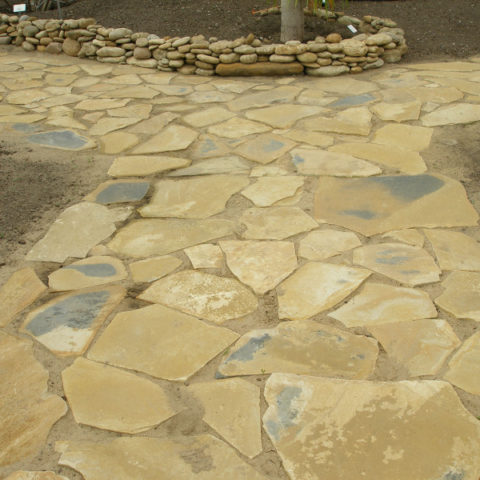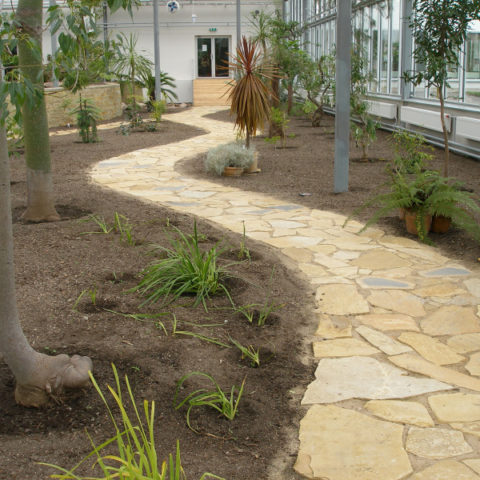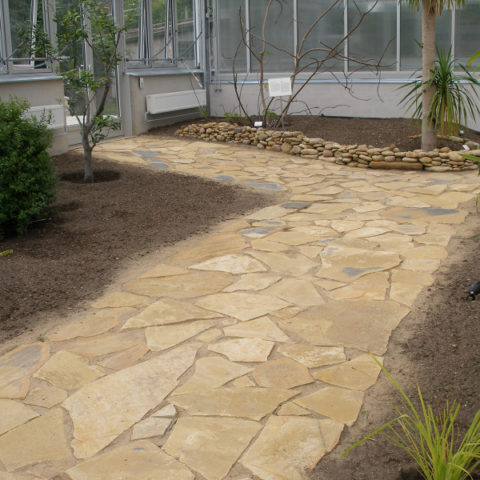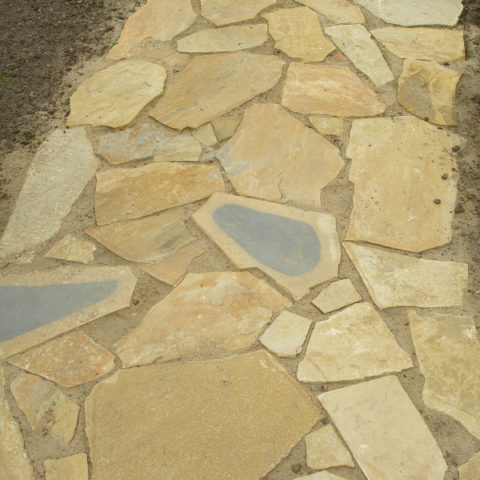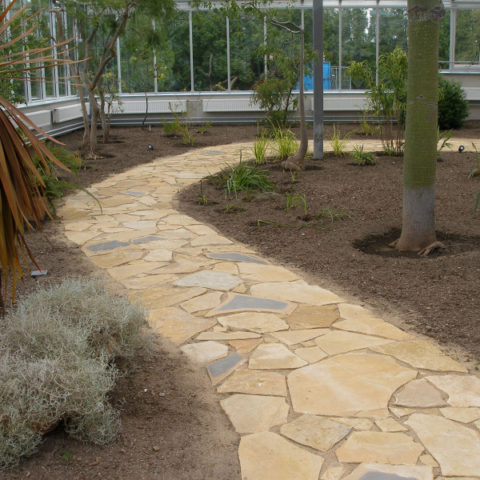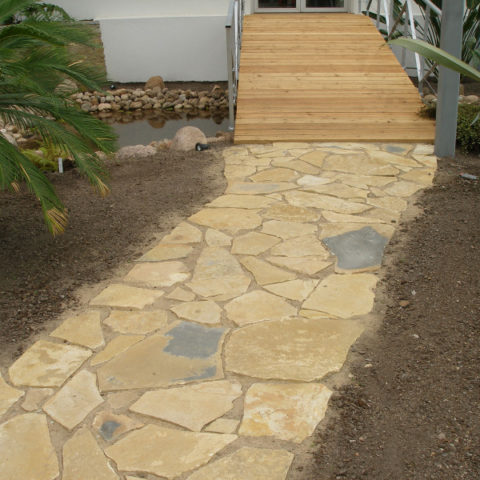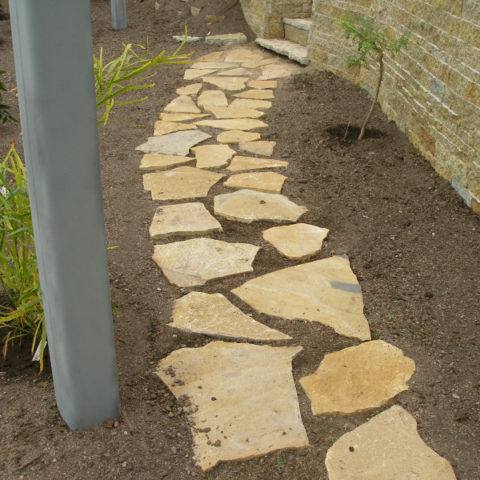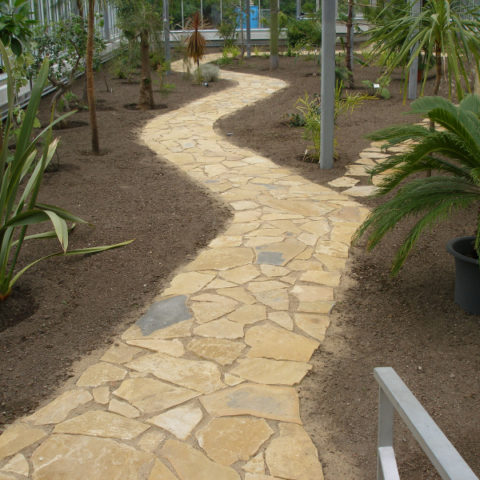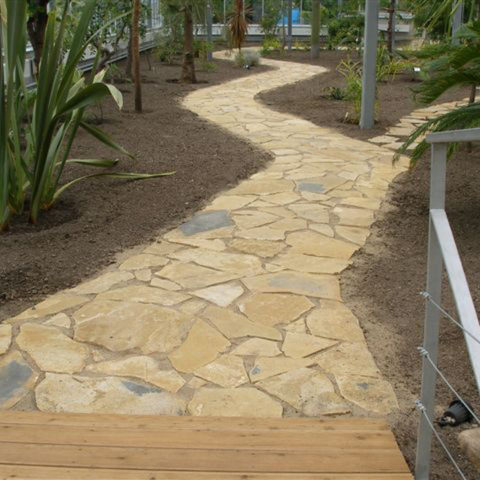Ungru Menuet
Ungru Menuet - UM
Ungru menuet — UM, i.e., naturally shaped limestone plates with natural surfaces
Material:
1.1. Made of weatherproof Ungru limestone, which is broken mechanically (without blasting) in the limestone quarries in Ridala rural municipality, Lääne County.
1.2. Ungru limestone is a mixture of grey and yellow stones — occasionally the stones may also be in brownish-yellow, yellowish-brown, bluish-grey and other tones. The stones are with a layered structure.
Description of the product, dimensions and tolerances:
2.1. U-menuet is a naturally shaped limestone plate that has broken edges and a natural, rather smooth, but partly scabrous surface.
2.2. The colour is mainly yellowish-brown up to brownish-yellow, but there may be occasional bluish-grey tones.
2.3. In case of U-menuet plates, the selection of colour is not performed.
2.4. U-menuet plates may not be always available; the supply depends on the stock in the warehouse.
2.5. Standard dimensions:
– thickness 3–5 cm (approximately 7 to 15 pieces in a square metre)
– thickness 5–7 cm (approximately 10 to 15 pieces in a square metre)
2.6. Stone plates with non-standard dimensions may also be available.
2.7. The thickness of the plates is uneven (may vary within one plate). In the extent of 90%, the thickness of the delivered material must remain in the predetermined thickness range; the thickness may be different in the edges of some plates.
2.8. Marking:
UM 7/12 (Ungru menuet with 7–12 mm thickness)
UM 12/20 (Ungru menuet with 12–20 mm thickness)
UM 2/3 (Ungru menuet with2–3 cm thickness)
2.9. The stones may not have consistent cracks (NB! Not to be mistaken for the grooves of mineral calcite!).
2.10. After installation there may be some colour changes on the stones (brownish lines around the stone), which will later disappear.
2.11. U-menuet is sold by square metre. The amount of the material in pack may differ from that shown on the delivery note +/- 5%.
Information that must be indicated in an order:
3.1. Thickness
3.2. Place of use — either indoors or outside, whether the established pavement is only to be walked on or is it also intended for cars to drive on.
3.3. We recommend obtaining 10–15% more material to compensate for the installation losses.
Possible places of usage:
4.1. For covering garden paths and sites
4.2. For covering garage driveways (UM 3/5 and UM 7/5)
4.3. In garden design
4.4. For finishing fireplaces and walls (UM 7/12)
4.5. For building limestone masonry, etc.
Installation tips:
5.1. We recommend ordering installation works from Ungru Paekivi OÜ, who will give a 2-year warranty to both the material and the installation.
5.2. When performing installation works yourself, we advise using lime mortar, which is made of clean (washed) sand and clean water. We do not recommend using Portland cement, which may cause the stones to change their colour.
5.3. Ready-made mortars or mixtures of adhesive intended for the installation of natural stones may also be used when installing limestone plates.
5.4. Attention should be paid on making a proper hydroinsulation.
5.5. When making garden paths, we advise installing the stone plates on a pre-tightened base made of crushed stone and sand. Fill the joints with small crushed stones, stone chips or granite siftings. Grass joints are also an option.







